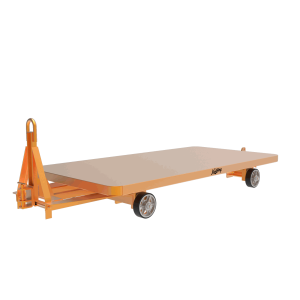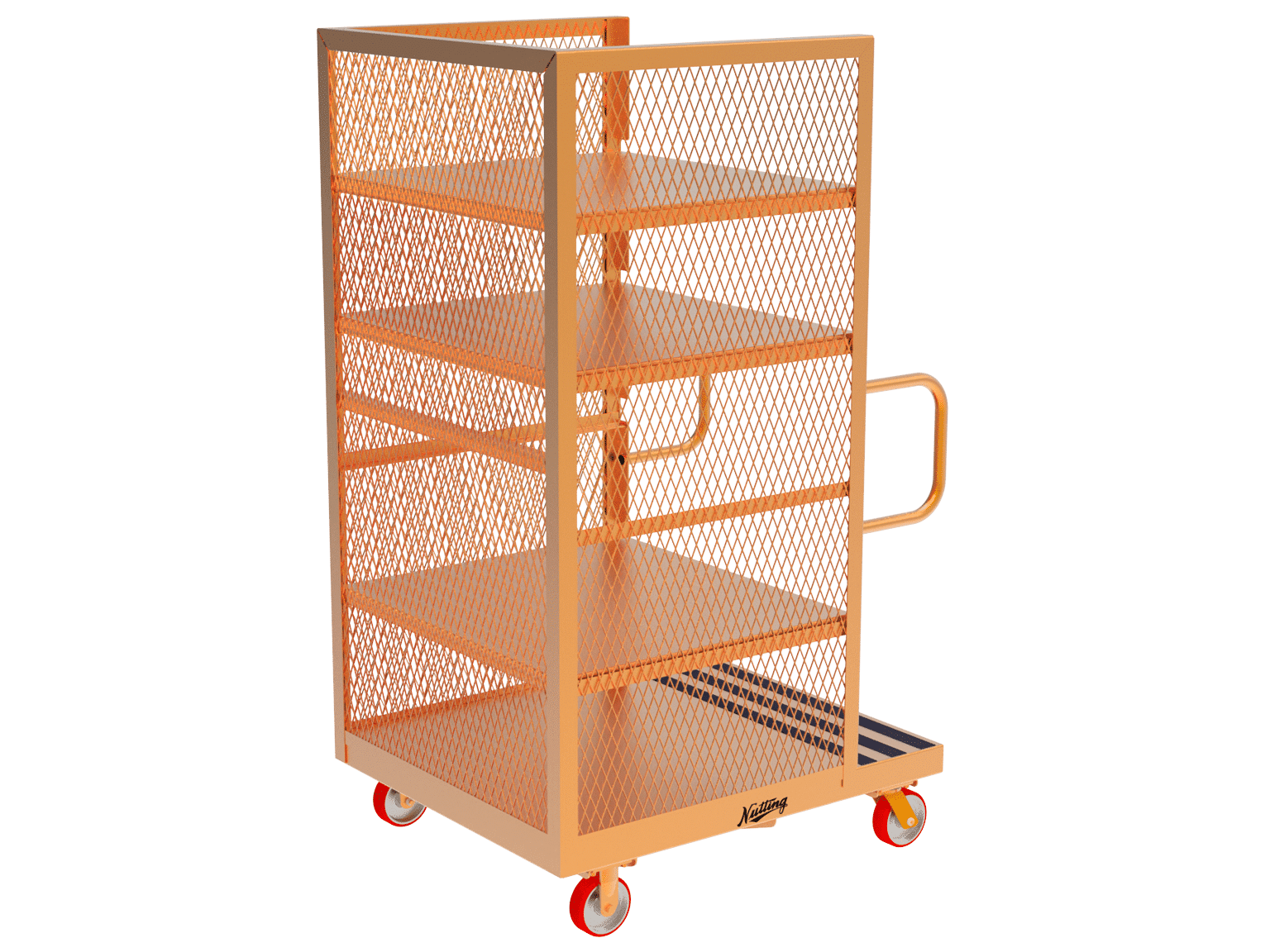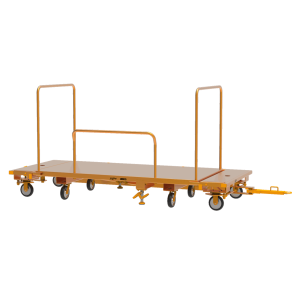Boost warehouse efficiency when you streamline the receiving process workflow through inventory management and the introduction of carts and tuggers.
Maximize efficiency in your warehouse with streamlined shipping and receiving workflows. This article offers practical solutions to enhance these critical operations, focusing on advanced technology implementation and innovative equipment usage. Explore insights and strategies that will refine your shipping and receiving operations, reduce bottlenecks, and adapt your operations to the demands of a rapidly changing market.
The Warehouse Receiving Process
The receiving process is a key first step in warehouse management, setting the stage for all subsequent processes. This process flow begins the moment goods arrive at the warehouse receiving dock. The primary objective of this process is to verify and accept incoming shipments accurately and efficiently, which involves an inventory count against the purchase order and inspecting the stock for quality and quantity discrepancies.
Key Steps in the Receiving Process
- Goods Arrival: Inbound shipments arrive at the receiving dock, where they are logged and scheduled for unloading.
- Verification: While still in the receiving area, each item is verified against the purchase order to ensure quantity and product specifications accuracy.
- Quality Inspection: Products are inspected for any damage or quality issues.
- Documentation Update: Inventory records are updated to reflect the received goods.
Implementing Technology in the Receiving Process
Incorporating advanced technologies into the receiving process transforms warehouses’ management of inventory, streamlines operations, and responds to customer demands. Here are a few technologies that make a huge impact:
Barcode Scanners and RFID
Modern warehouses increasingly turn to technology like barcode scanners and RFID (Radio-Frequency Identification) to optimize inventory management. Barcode scanners facilitate quick and accurate tracking of products as they are received, processed, and stored. They streamline the verification process, reducing the likelihood of human errors that can occur with manual data entry.
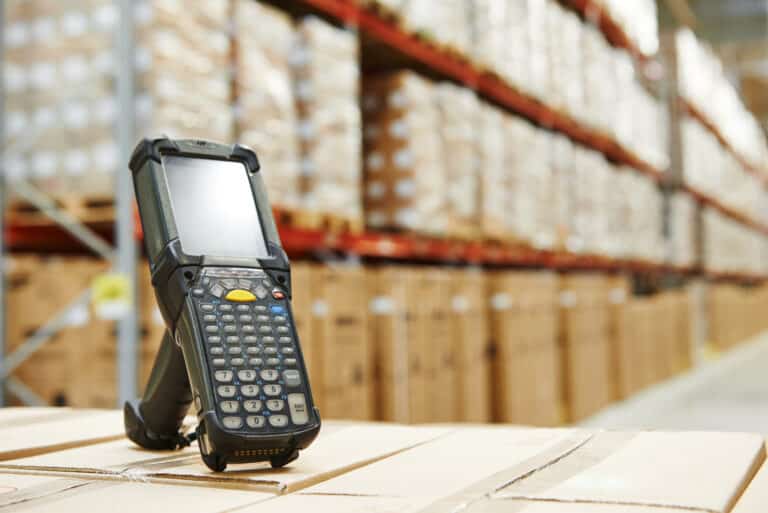
RFID technology takes this a step further by enabling wireless tracking of inventory levels. RFID tags attached to products or pallets can be read from a distance, allowing faster processing and real-time inventory updates. This is particularly beneficial in large warehouses where updating thousands of stock counts is a daily requirement.
Inventory Management Software
In e-commerce, real-time inventory and order processing updates can significantly enhance your decision-making ability. Real-time updates enable warehouses to respond swiftly to customer orders and ensure that inventory levels are always current. Constantly updating data significantly reduces the risks of overstocking or stockouts. This level of accuracy makes it possible to maintain a competitive edge in e-commerce, where customer satisfaction hinges on the speed and accuracy of order fulfillment.
Warehouse Management Systems (WMS)
Warehouse Management Systems (WMS) offer a comprehensive solution for managing warehouse operations, from receiving and storing goods to picking and shipping orders. WMS provides an integrated platform where all data is centralized. Warehouse Management Systems allow for more efficient workflow management and better resource allocation.
A well-implemented WMS can also transform the receiving process by automating routine tasks, optimizing storage space through intelligent put-away strategies and algorithms, and enhancing the accuracy of inventory records.
The Warehouse Shipping Process
The shipping process is an important final stage in warehouse management where customer orders are fulfilled accurately and efficiently. It starts when items are picked from storage and ends with the dispatch of goods. The main goal is to efficiently and accurately manage the preparation, packaging, and dispatching of outgoing shipments. This process includes verifying order accuracy, ensuring quality control, and addressing potential shipping and routing challenges.
Key Steps in the Shipping Process
- Order Processing: When a customer order is received, it’s processed and prepared for picking. This step involves verifying the order details and locating the items in the warehouse.
- Picking and Packing: Warehouse staff pick up the ordered items from their respective locations and pack them securely, ready for shipment.

- Quality Checks: Before the items are shipped, they undergo a final quality check to ensure order fulfillment accuracy and prevent shipping errors.
- Labeling and Documentation: Each package is labeled correctly with shipping information, including the destination address and tracking details. Required shipping documents are prepared at this stage.
- Routing and Dispatch: The final step involves determining the most efficient route for delivery and dispatching the shipment through the selected carrier.
Optimizing The Shipping Process
The order fulfillment process can be time-consuming, but with the right equipment and strategies in place, it can become a streamlined and efficient operation, significantly reducing the time from order receipt to dispatch while maintaining order accuracy.
Enhancing Efficiency with Custom Equipment
Custom carts, trailers, and tugger systems work with updated technology to streamline warehouse workflows effectively. Designed to match specific warehouse layouts and product types, custom carts, and trailers significantly reduce manual labor and the number of trips needed to move products. Tugger systems can transport multiple carts or trailers simultaneously as a more efficient alternative to forklifts. This speeds up the process and reduces warehouse congestion, leading to more organized and efficient workflows.
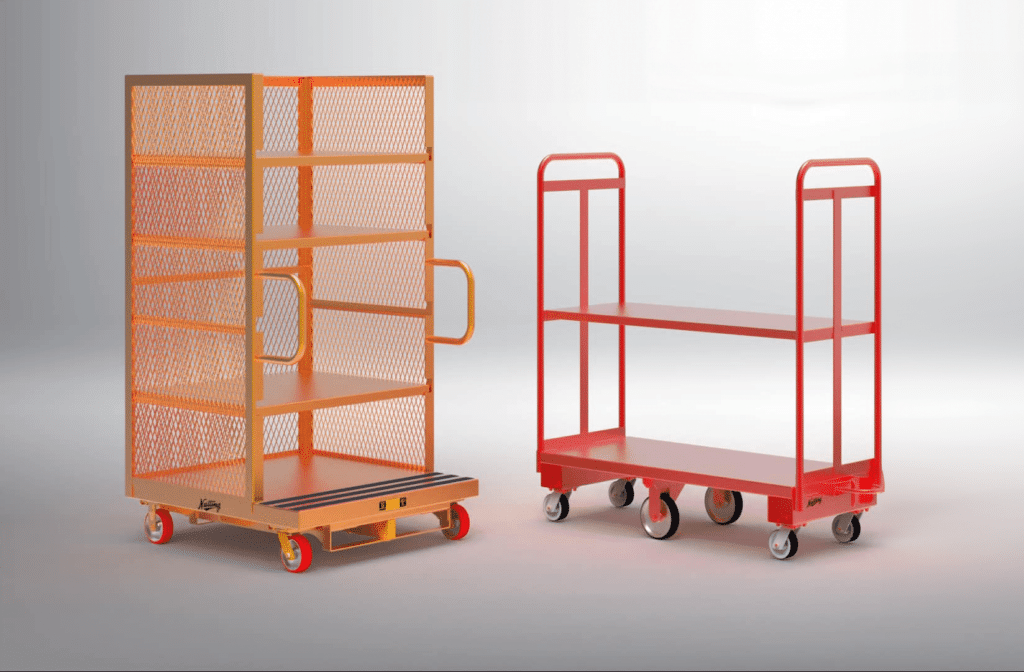
Incorporating Advanced Software Systems
Advanced software systems can automate tasks like selecting the most efficient shipping methods and ensuring accurate, consistent labeling and documentation, saving time and enhancing the reliability and trackability of shipments.
Adopting Smart Shipping Strategies
To further optimize the shipping process, adopting smart shipping strategies is key:
- Dynamic Shipping Options: Offering a variety of shipping methods tailored to different types of goods, considering factors like delivery speed, shipping costs, and handling requirements.
- Effective Use of Shipping Labels: Implementing systems that ensure precise and informative shipping labels is essential for efficiently routing and tracking shipments.
- Quality Control Measures: Implementing rigorous quality control checks before dispatch to ensure that all orders meet the required standards, reducing the risk of returns.
By combining the use of custom equipment and advanced software with smart shipping strategies, warehouses can significantly enhance their shipping process. This improves efficiency, accuracy, and overall customer experience, ultimately contributing to a more robust and responsive supply chain.
Future Trends in Warehouse Management
The basics of shipping and receiving processes are tried and true. But there are some new trends that every warehouse manager should be aware of:
Mobile App Integration
Mobile apps aren’t new tech, but they are relatively new to warehousing management. Apps offer flexibility and mobility to warehouse operations, allowing staff to access and update data on the go. These apps can integrate with existing warehouse management systems (WMS), providing real-time updates on inventory levels and order status. By incorporating wireless connectivity, these apps even enable remote warehouse operations management.
Innovations in Replenishment and Inventory Storage
This area is witnessing significant advancements, particularly in two key aspects:
- Automated Replenishment Systems: These systems utilize predictive analytics and real-time data to foresee inventory requirements. Automating replenishment orders helps minimize the risks associated with stockouts and overstocking. This proactive approach ensures a more efficient inventory management process.
- Dynamic Inventory Storage Solutions: The introduction of advanced shelving and storage systems marks a significant improvement in warehousing. These systems are capable of automatically adjusting to different inventory sizes and volumes. This dynamic adaptation optimizes space utilization and enhances overall efficiency, adjusting in real-time to meet changing storage needs.
Both of these innovations aim to streamline warehouse operations, making them more responsive and efficient in handling inventory.
Advanced Management of Received Goods
Automation in sorting systems and smart conveyors will identify and route incoming goods to their appropriate locations in the warehouse. Coupled with technologies like RFID, this will ensure that goods are not only received and stored more efficiently but also accurately tracked throughout their stay in the warehouse.
Better Workflows with Nutting
Don’t let inefficiencies hold you back. Learn how Nutting Material Handling Solutions can transform your warehouse operations, enhance efficiency, and boost your bottom line. Let’s work together to create a smarter, more productive warehouse environment for your business. Reach out now to get started!
Inspired by Our Solutions? Let's Talk!




